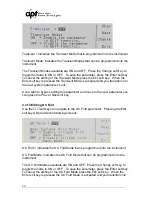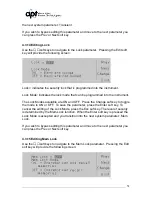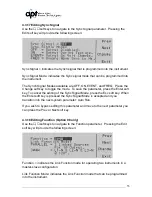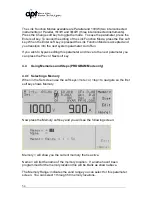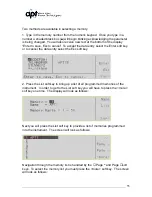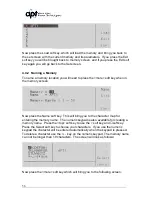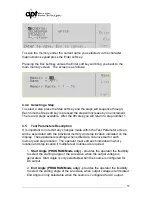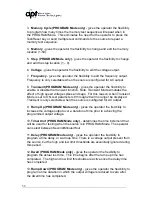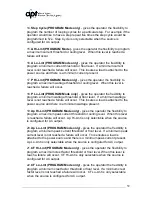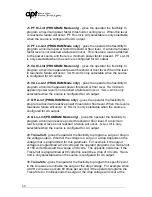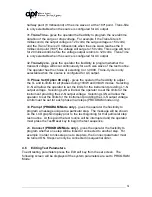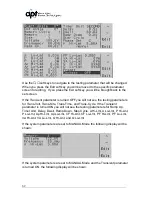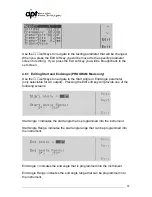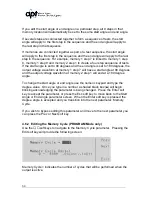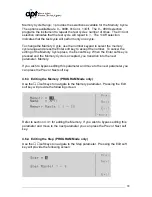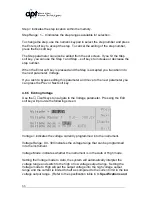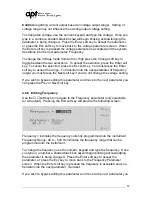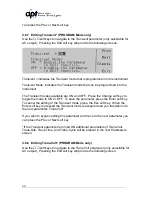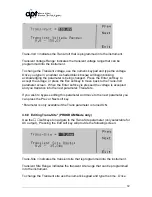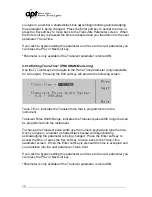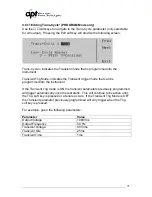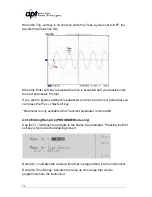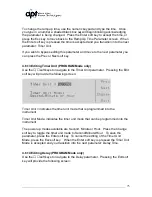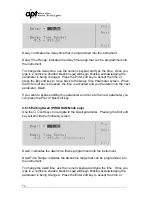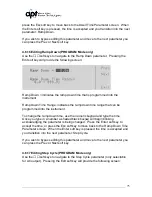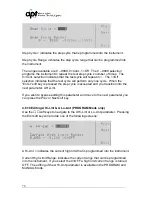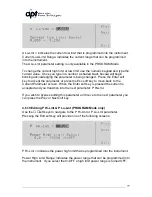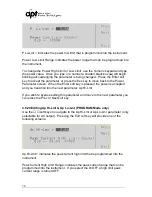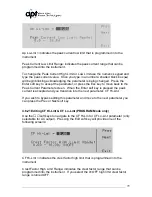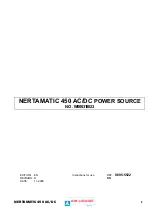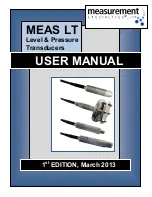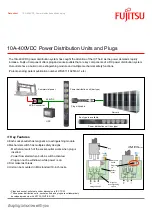
64
If you edit the start angle or end angle on a particular step, all 9 steps in that
memory location will automatically be set to the same start angle and end angle.
If several steps are connected together to form a sequence of tests, the start
angle will apply to the first step in the sequence and the end angle will apply to
the last step in that sequence.
If memories are connected together as part of a test sequence, the start angle
will apply to the first step in the sequence and the end angle will apply to the last
step in the sequence. For example, memory 1 step 7 is linked to memory 1 step
8, memory 1 step 9 and memory 2 step 1 to create a four step sequence of tests.
If the start angle is set to 90 degrees and the end angle is set to 180 degrees, the
output voltage waveform at memory 1 step 7 will have a start angle at 90 degrees
and the output voltage waveform at memory 2 step 1 will end at a 180 degree
angle.
To change the start angle or end angle use the numeric keypad and type the
degree value. Once you type in a number a shaded black box ( ) will begin
blinking acknowledging the parameter is being changed. Press the Enter soft
key to accept the parameter, or press the Esc soft key to move back to the Start
Angle or End Angle parameter screen. When the Enter soft key is pressed the
degree angle is accepted and you transition into the next parameter: Memory
Cycle.
If you wish to bypass editing this parameter and move to the next parameter you
can press the Prev or Next soft key.
4.6.2 Editing the Memory Cycle (PROGRAM Mode only)
Use the
∧
,
∨
soft keys to navigate to the Memory Cycle parameter. Pressing the
Edit soft key will provide the following screen:
Memory Cycle = indicates the number of cycles that will be performed when the
output is active.
Summary of Contents for 310XAC
Page 13: ...13 320XAC 340XAC...
Page 116: ...116 1 Test Complete OK WAI Wait for next command...

